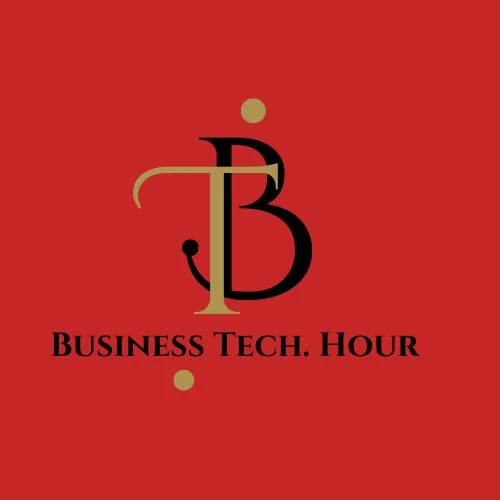Enterprise IoT adoption is a rapidly growing phenomenon in today’s technologically driven world. The Internet of Things (IoT) is a highly discussed subject in various sectors, fueled by continuous progress in AI, connectivity, and edge computing that propel its expansion. This article explores how businesses are embracing IoT, its impact on areas such as healthcare and manufacturing, and shares examples of successful implementations. Additionally, we will address the challenges enterprises face in this journey, including security, data privacy, and technology standards.

Table of Contents
Driving Digital Transformation with Enterprise IoT Adoption
Enterprise IoT adoption is at the core of the digital transformation landscape, propelling businesses towards enhanced productivity and smarter operational models. By integrating IoT, enterprises are optimizing applications and connectivity, driving impactful changes across various sectors. The IoT boom and subsequent IoT adoption have resulted in a surge of connected devices offering real-time data collection and data exchange. These advancements are transforming traditional Business IT into a robust framework where AI development services and cloud computing play pivotal roles.
The abundance of data generated via IoT devices requires advanced data processing and security measures to ensure efficient and safe operations. Enterprises leveraging Internet of Things News and edge computing are staying ahead in the competitive business landscape by swiftly adapting to tech innovations, making IoT a significant player in marketing tech, telecoms tech, and beyond.
Harnessing the Power of IoT in Healthcare
Healthcare is one of the foremost areas benefitting from enterprise IoT adoption. IoT applications in healthcare are revolutionizing patient care, remote monitoring, and predictive diagnostics. Edge computing and AI are cornerstones of this transformation, offering fast, reliable data processing closer to the source. By employing IoT devices for data collection, healthcare providers can monitor patient vitals in real-time, thus ensuring timely interventions and improving patient outcomes.
The integration of AI, Blockchain, and IoT in healthcare systems enhances data security and privacy, crucial for maintaining patient confidentiality. Moreover, continuous advancements in healthcare IoT devices contribute to a more efficient, cost-effective, and personalized treatment plan, marking a substantial leap in the sector’s technological adoption and aligning with the latest internet of things news.
Transforming Industrial Processes with IoT
In the realm of manufacturing and supply chain, IoT adoption is driving efficiency and innovation. The integration of IoT and AI in industrial IoT allows for seamless automation, predictive maintenance, and real-time analytics, providing actionable insights that enhance production processes and reduce downtimes. IoT devices embedded in manufacturing systems create a network of interconnected machines capable of communicating and optimizing their operations autonomously. This network supports continuous data exchange and processing, essential for maintaining competitive advantage in a fast-paced market. TechGenies, a prominent player in industrial IoT, demonstrates how IoT implementations lead to significant cost savings and improved operational efficiency.
The Competitive Advantage of IoT in Business
Enterprise IoT adoption offers a substantial competitive edge by enabling businesses to innovate and operate more efficiently. IoT-driven solutions facilitate seamless data flow and analysis, better resource management, and enhanced customer experiences. Utilization of IoT in marketing tech allows companies to track consumer behavior and preferences, tailoring their strategies for higher engagement and profitability. In telecoms tech, IoT ensures superior connectivity and data exchange essential for deploying new services and applications. By adopting AI and IoT, enterprises achieve superior decision-making capabilities and operational intelligence, thereby driving growth and maintaining market relevance. The synergistic effect of IoT and cloud computing streamlines processes and reduces operational costs, ensuring that enterprises stay ahead of the curve in their respective industries.
Future Trends and Real-World Examples
Looking ahead, enterprise IoT adoption is set to evolve with emerging technologies like blockchain for secure data exchanges and advanced AI for predictive analytics and automation. The IoT market will witness more personalized and context-aware applications tailored to specific industry needs. Future trends indicate a move towards more decentralized edge computing solutions, reducing latency and enhancing real-time decision-making capabilities.
Real-world examples of successful IoT initiatives include smart cities employing IoT for efficient urban management and energy conservation, and agriculture adopting IoT for precision farming techniques. These implementations showcase how IoT is fostering digital transformation across varied domains. As enterprises continue to invest in IoT solutions, they will unlock unprecedented opportunities for innovation, efficiency, and competitive advantage, solidifying IoT’s role. Indeed, enterprises adopt these IoT-driven solutions, and pave the way for smarter factories and more resilient supply chains, which are critical for sustaining growth and innovation.
In conclusion, enterprise IoT adoption is transforming the way businesses operate across sectors. From healthcare to manufacturing and beyond, IoT offers boundless opportunities for innovation and growth. However, enterprises must address challenges such as security, data privacy, and technology standards to fully harness the benefits. By embracing IoT, enterprises can gain a competitive advantage, optimize operations, and deliver enhanced customer experiences. The future holds immense potential for IoT adoption, with real-world examples and evolving market trends paving the way for a connected and intelligent world.
For more latest blog post on Technology:
